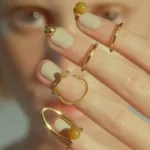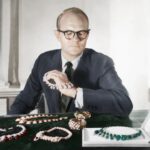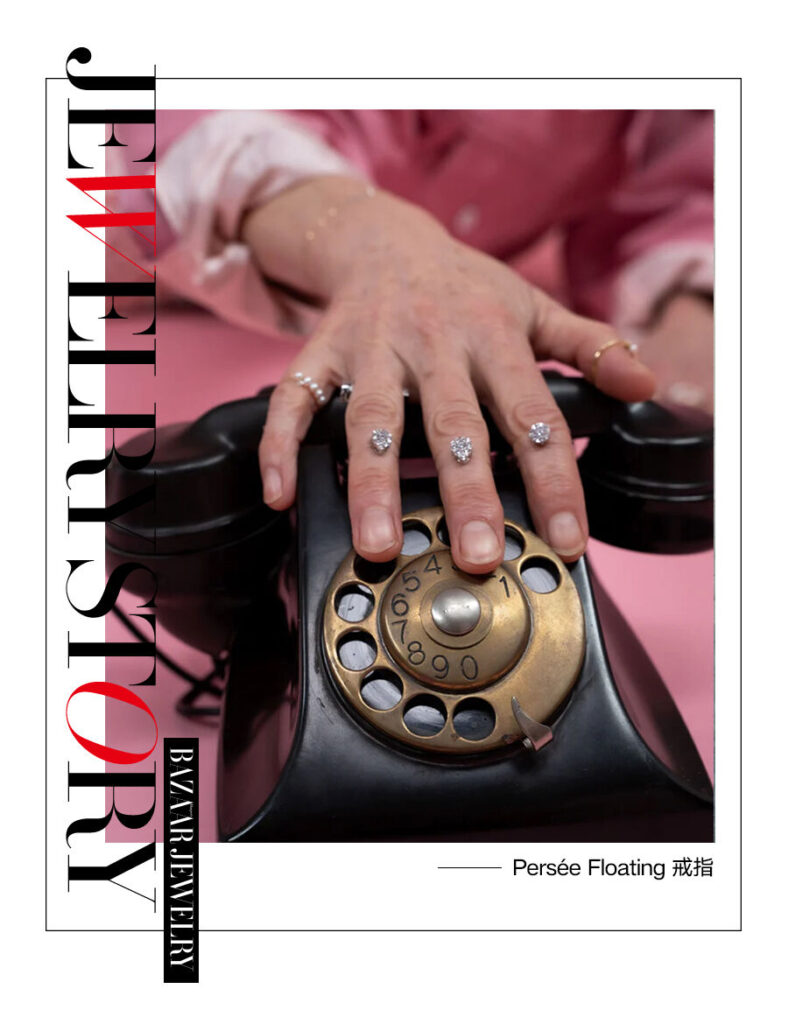
April’s birthstone is the dazzling diamond, which is also the most mainstream gemstone in the jewelry world today. You may already be familiar with its history, styles, and selection criteria, so this time, let’s introduce you to some unique diamond designs from niche jewelry brands. Each of these brands has its own specialty, offering a different kind of beauty beyond just competing for size and brilliance!
Many jewelry brands pay great attention to diamond cutting because it can make diamonds more brilliant and eye-catching. However, some brands take the opposite approach, pursuing the unique soft radiance and special effects of antique-cut diamonds and cleverly incorporating them into modern designs to showcase another side of diamond charm.
Vak Jewelry
Portrait-cut Diamonds with “Dimension”
Vak Jewelry, founded by Indian jewelry designer Vishal Kothari, draws inspiration from the ancient Mughal Empire culture. He particularly loves the portrait-cut diamonds favored by Emperor Shah Jahan, or rather, almost all Indian princely states loved this special type of diamond. As Vishal Kothari says, “These portrait diamonds are like magical fragments, exuding elegance and romance, and they’re my personal favorite.”

Vak Jewelry presents portrait diamond designs that are very modern and three-dimensional, with soft radiance showcasing the diamond’s pure and understated beauty. The designer cleverly assembles them to form abstract hydrangeas or ancient lotus motifs, with almost no visible metal support. These flowers appear as if carved from a single diamond.
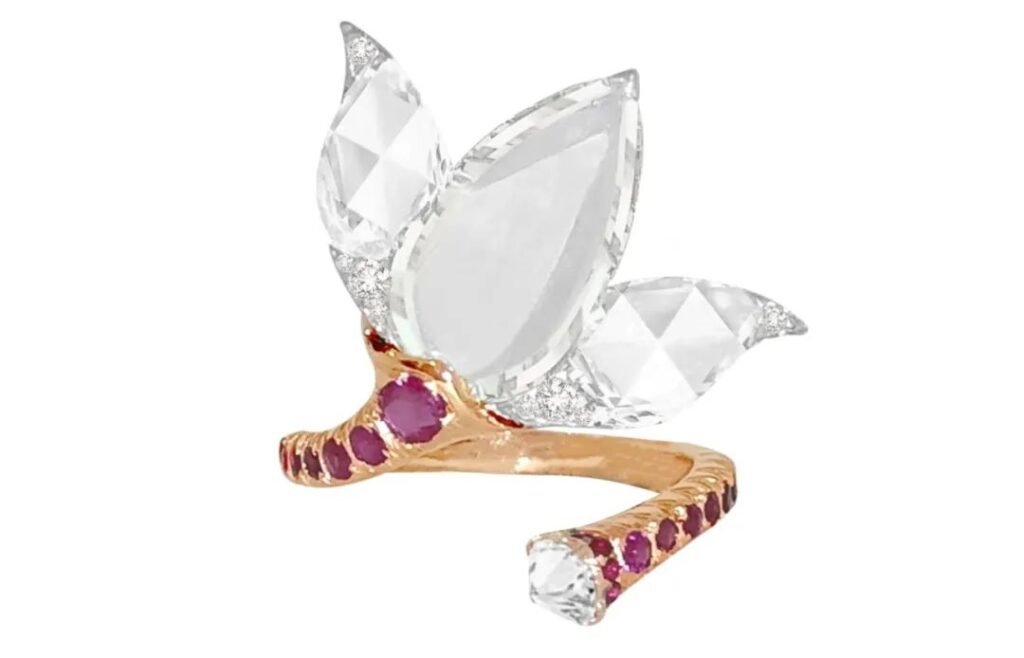
Vishal Kothari also combines portrait cuts with rose cuts, giving the entire piece more depth. The similar texture creates harmony, while subtle changes in light refraction emphasize the piece’s three-dimensionality and extensibility, visually presenting rich textural effects.
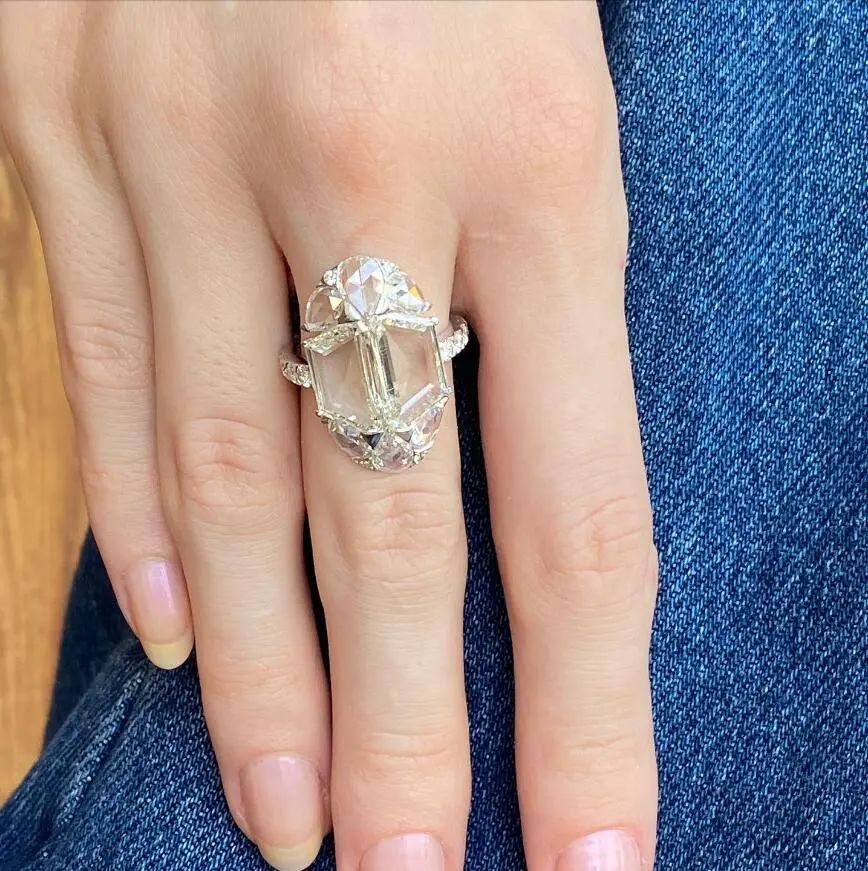
Millie&Noah
Combining Old European Cut with Master Craftsmanship
Millie & Noah’s founder, Jen Tran, has a completely interdisciplinary mindset. Originally a Ph.D. researching cancer in the biological field, she entered the jewelry world because she wanted to find a piece of emotional jewelry that could represent her father and son.
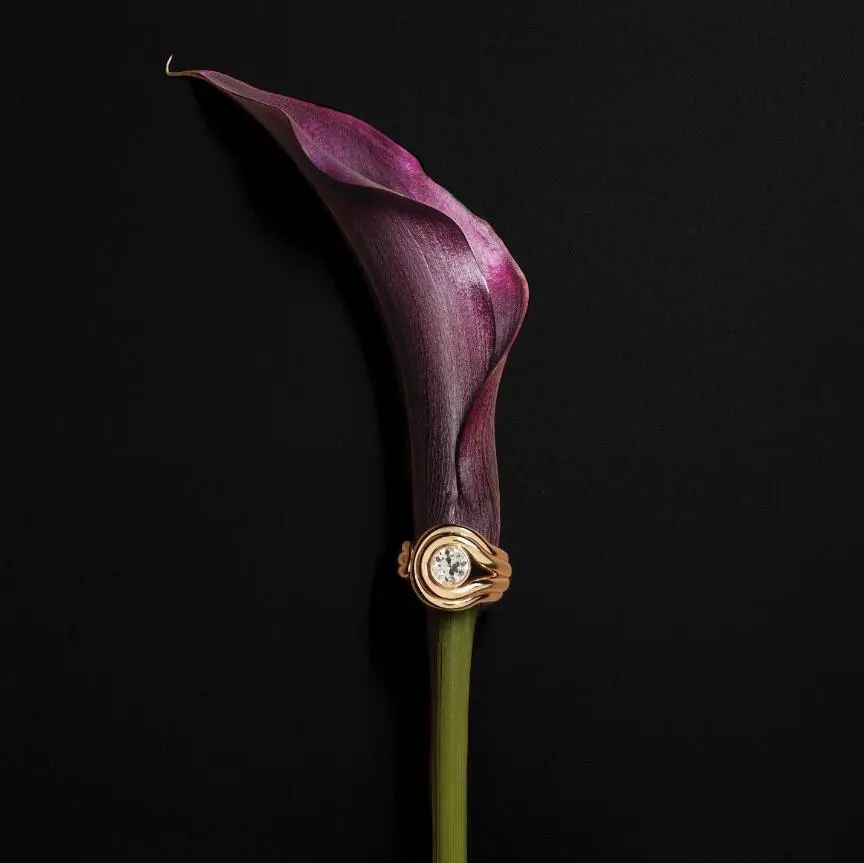
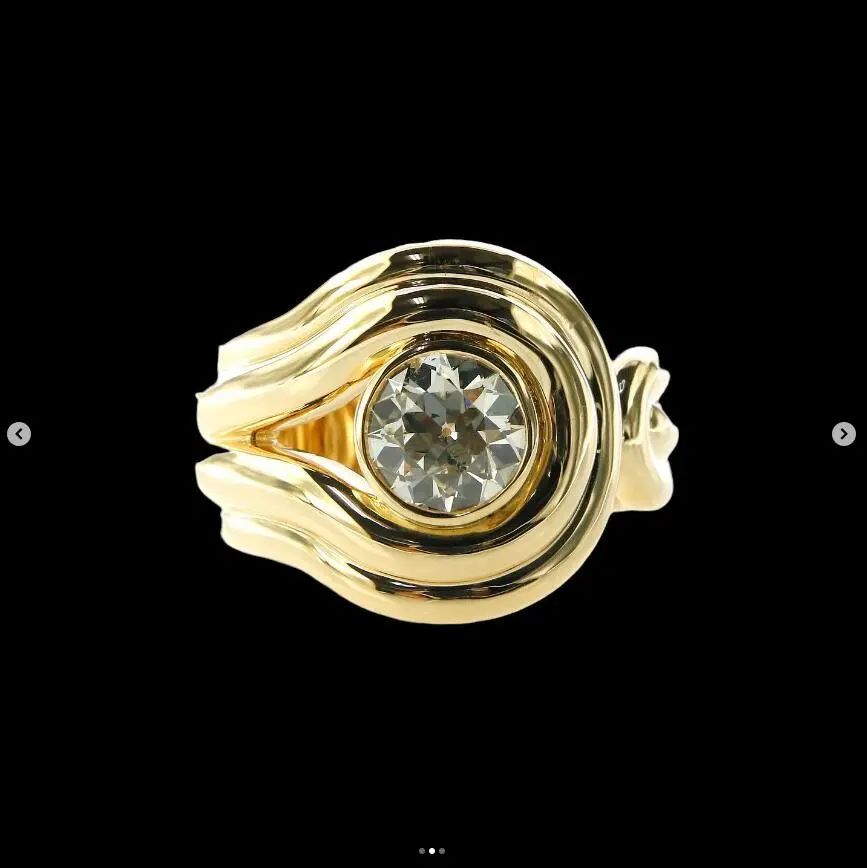
Perhaps Jen Tran received very rigorous and rational scientific training, but she is actually a very sensitive designer. Her jewelry brand almost exclusively accepts private custom orders. She patiently and keenly identifies clients’ personal emotional needs and special imprints, incorporating them into jewelry designs.
She particularly favors Old European cut diamonds because she believes the light from this cut is soft and understated, like long-term emotions between people, delicate and enduring.
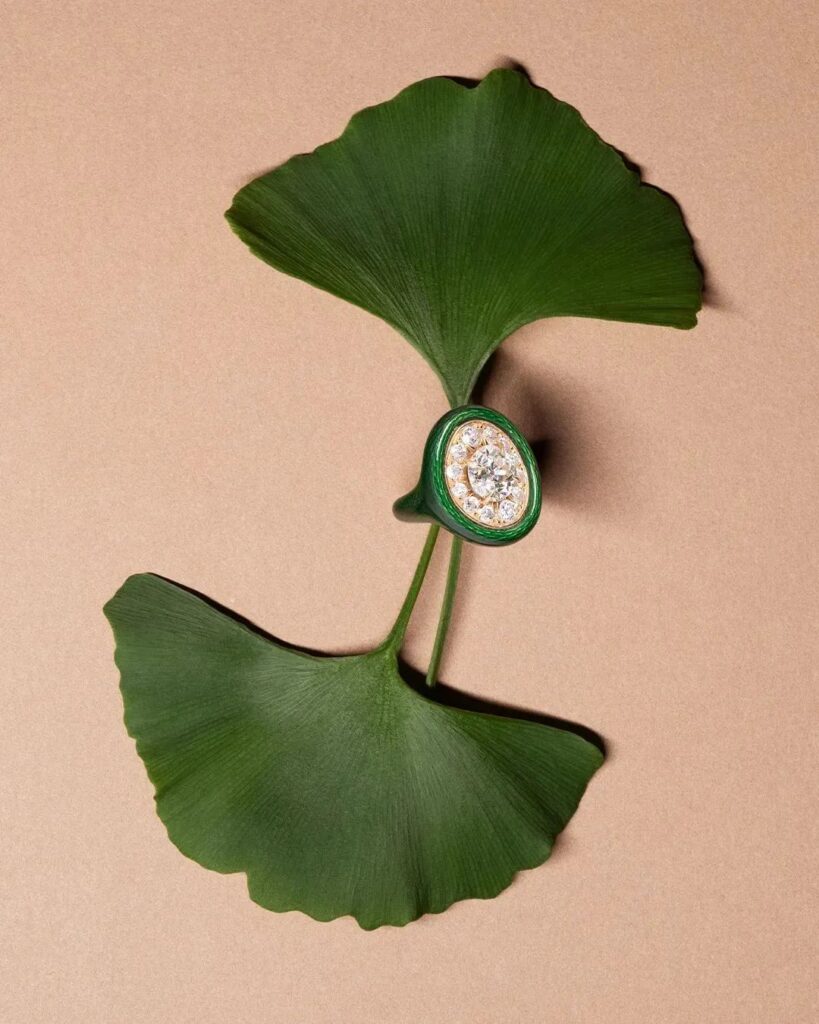
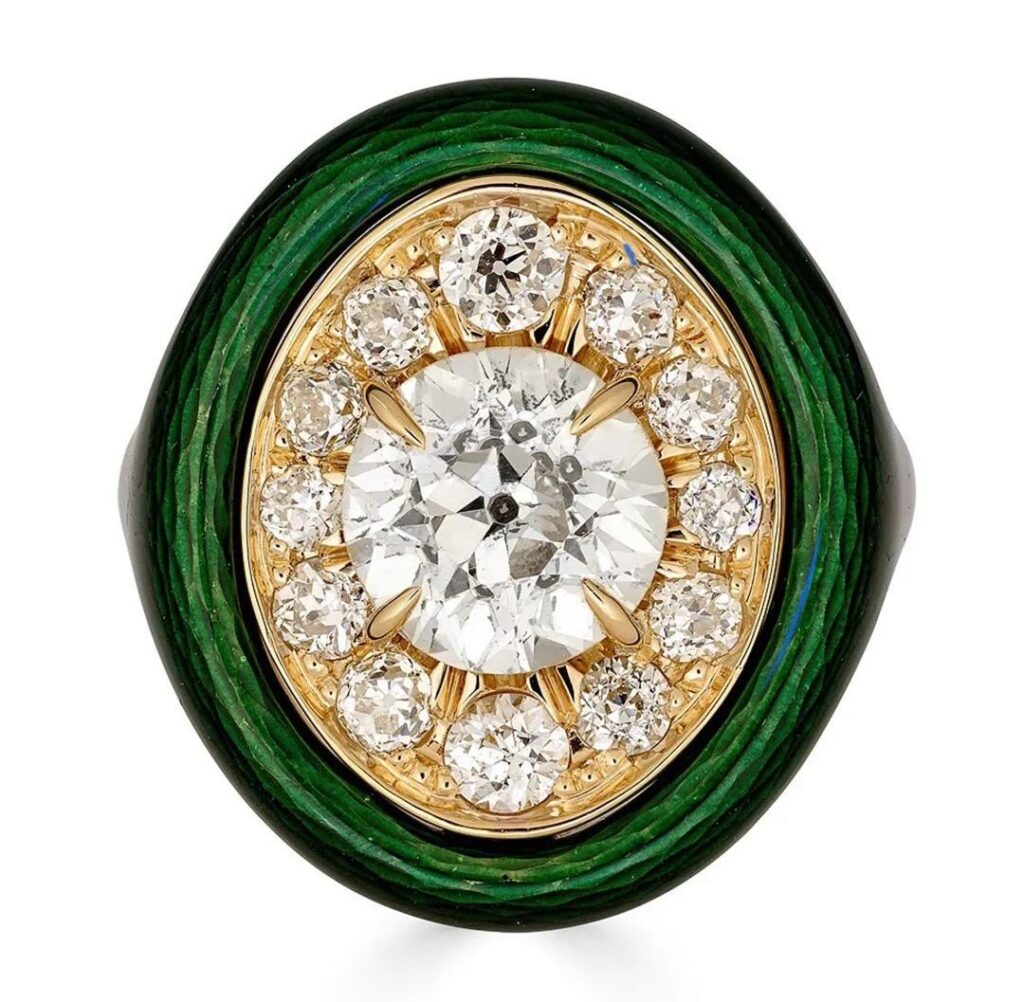
This designer knows how to play to her strengths and avoid weaknesses. Aware that her shortcoming is in craftsmanship, she seeks out the most excellent independent master artisans in various fields worldwide to create her jewelry. Her list of master collaborators includes German engraving master Michael Peuster, French inlay artist Rose Saneuil, and one of the last remaining pearl stringing experts in the UK, Renata Terjeki, among others.
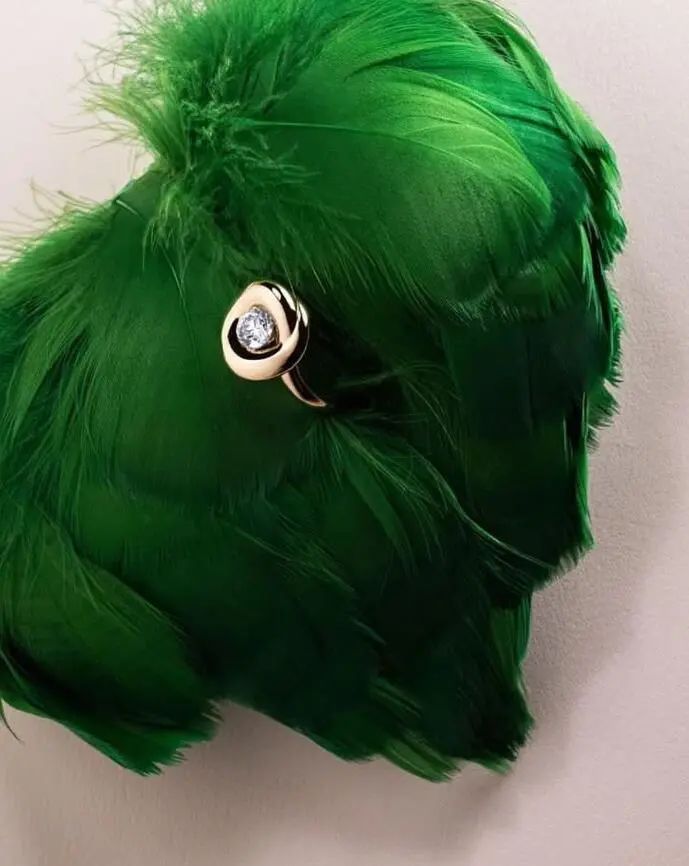
This provides a more perfect stage for her favorite Old European cut diamonds. They can be combined with enamel twists, with understated patterns complementing the elegant diamond radiance. They can also be directly strung into necklaces of Old European cut diamond beads, presenting a different kind of splendor.
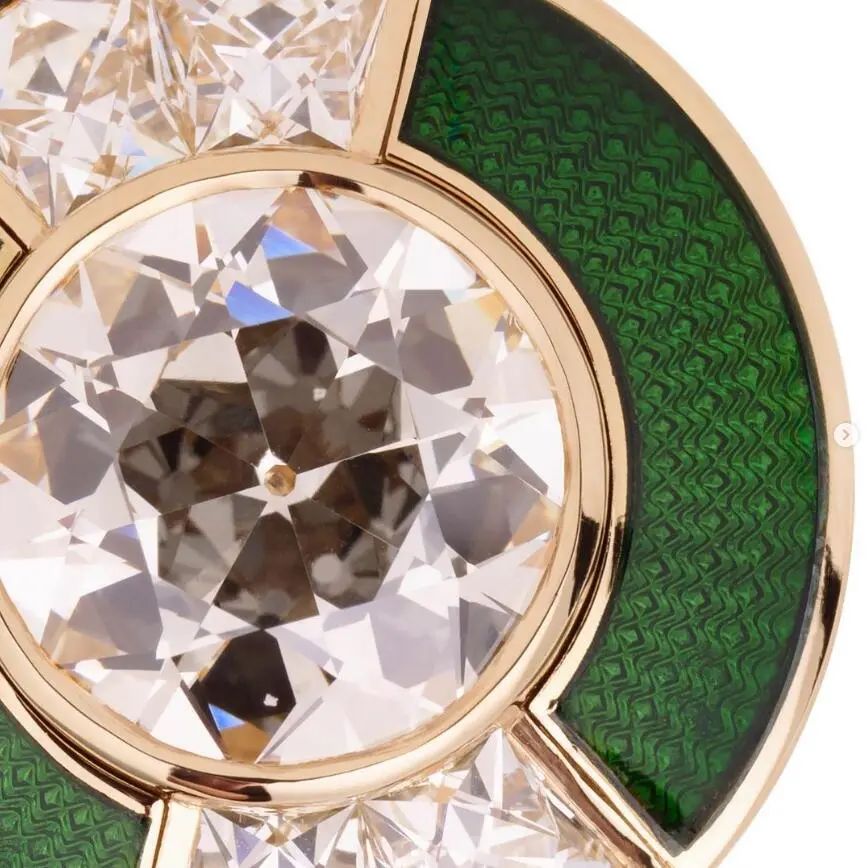
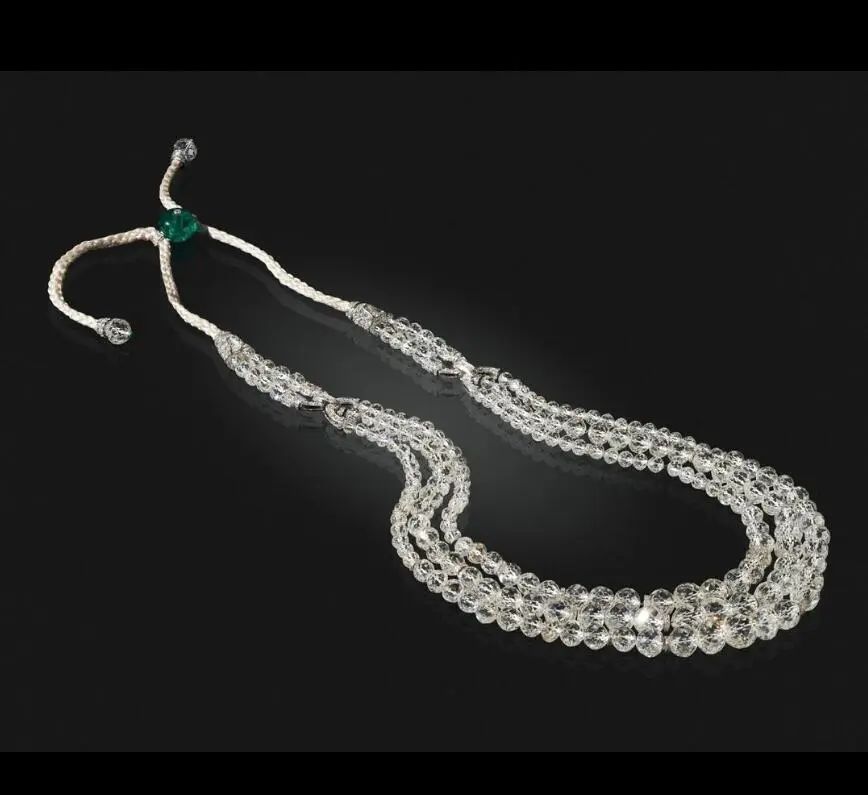
64 Facets
Upgrading the Rose Cut
Among ancient diamond cuts, besides portrait and old European cuts, there’s 64 Facets, which specializes in rose cuts. Founder Gourav Soni is dedicated to giving new life to this 15th-century cutting technique.
In his view, this cut, which lacks a pavilion and has only 2-24 facets, may not have the strong fire of a brilliant cut, but it emits a charming and subtle radiance, more suitable for diamond-intensive designs in everyday jewelry.
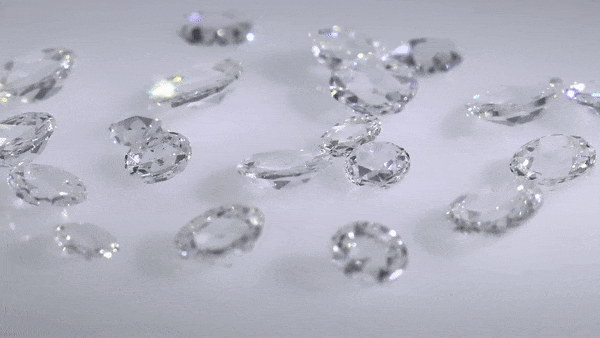

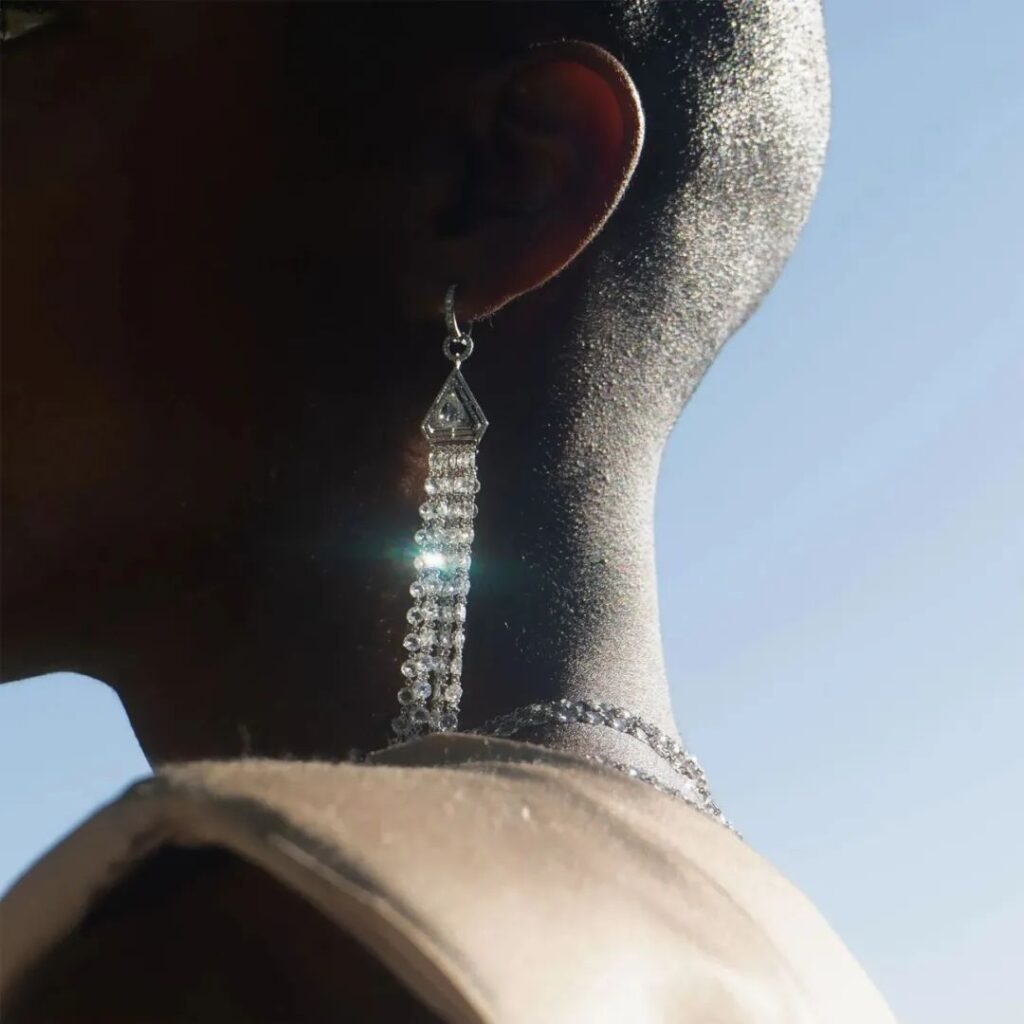
64 Facets’ rose cut diamond jewelry exudes more of an ethereal feel than a glamorous one, perfectly complementing your OOTD without appearing ostentatious. Long necklaces, in particular, are versatile – pairing well with artsy white shirts, soft wool sweaters, elegant gowns, or even sexy little black dresses.
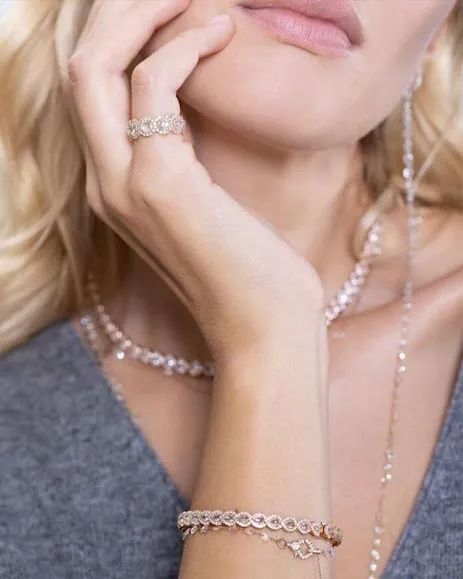
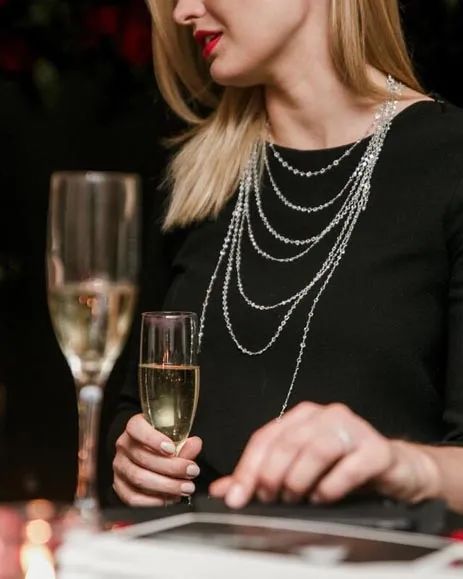
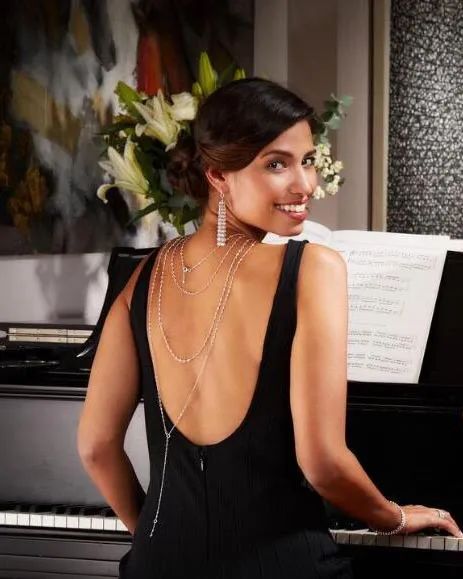
Moreover, this brand has upgraded the rose cut, creating the unique heart-shaped rose cut. Previously, rose cuts could produce round, oval, pear, or triangular shapes, but never heart shapes.
The heart shape is one of the most challenging cuts – the cleft at the top of the heart cannot be cut and faceted internally using traditional diamond polishing wheels. It also wastes more material, requiring many carats to be cut away to maintain a proper heart shape.
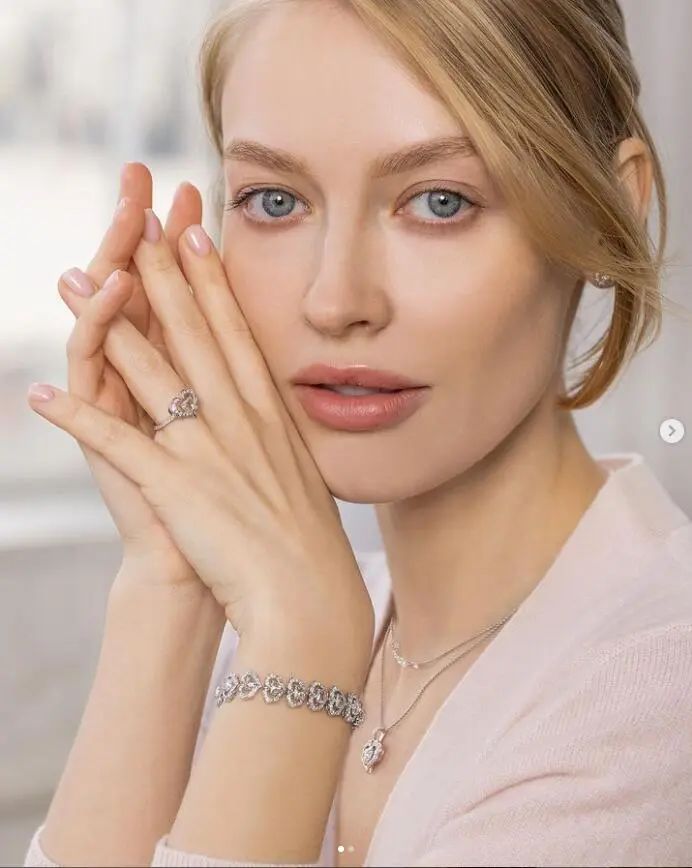
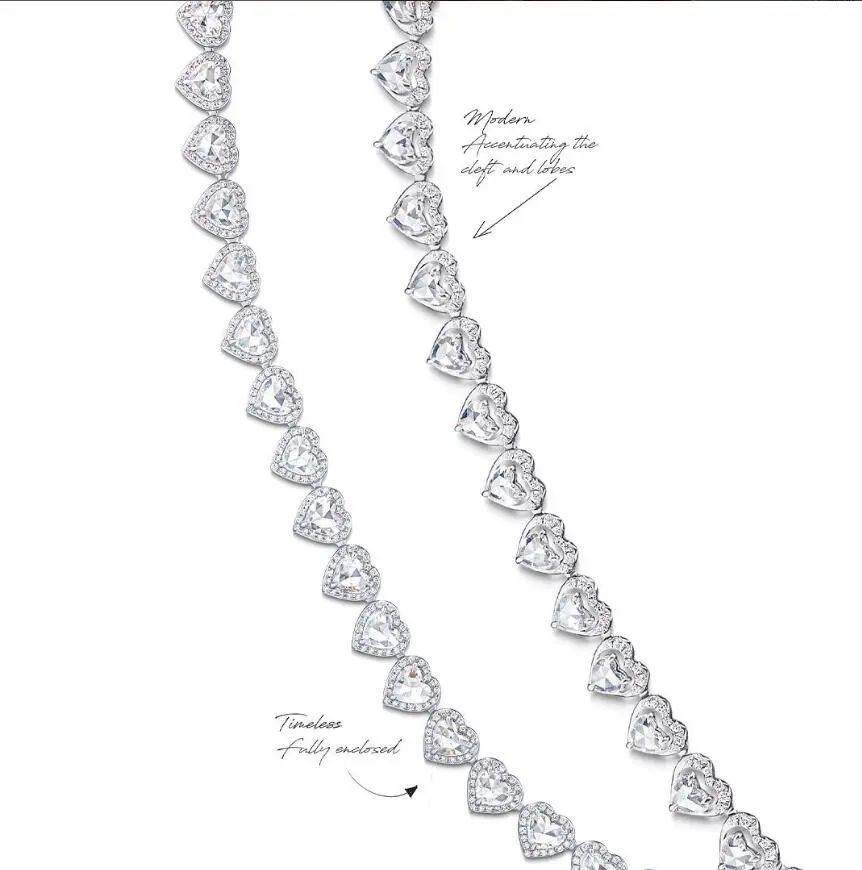
However, Gourav Soni believes that heart-shaped rose cuts are better suited for love themes and irresistible to romantic women. Their team of artisans spent two years perfecting this cutting method. Because rose cuts have lower standardization, each step requires creative decisions based on the rough stone’s unique properties. The angles, positions, and arrangements of facets must be just right, or the diamond will appear dull.

Many jewelry brands pride themselves on their setting techniques, such as Van Cleef & Arpels’ Mystery Setting or Boghossian’s Kissing technique. However, to truly appreciate techniques that highlight different diamond textures, one must look to these brands. Their methods might not be difficult, but they are innovative, maximizing unique diamond designs.
Hemmerle
Experiencing the Wonder of Inverted Diamonds
Many jewelry masters have used inverted diamond settings, but Hemmerle is undoubtedly a leader in this field. This German family brand is a pioneer of this technique. Known for their love of experimenting with new techniques, almost every generation has developed new gemstone setting methods. Thus, when people think of inverted diamond settings, Hemmerle is often the first name that comes to mind for many jewelry enthusiasts.
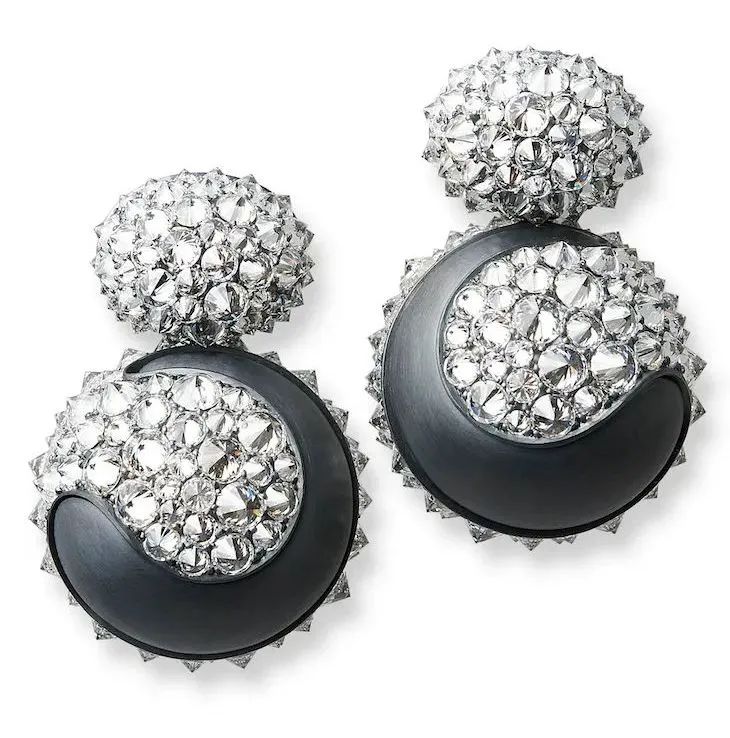
Christian Hemmerle says, “We’ve been using inverted diamond settings for about 15 years. It started as an experiment, and we found that this setting method could highlight the texture of the piece. Also, because more surface area of the diamond is exposed, light reflects from many different angles, adding unexpected depth.”

They soon discovered that this inverted setting technique could make gemstones brighter and could be applied not only to diamonds but also to colored gemstones. However, the color viewed from the crown differs from that seen from the pavilion, requiring more time to match colors. But it can enhance the gemstone’s brightness.
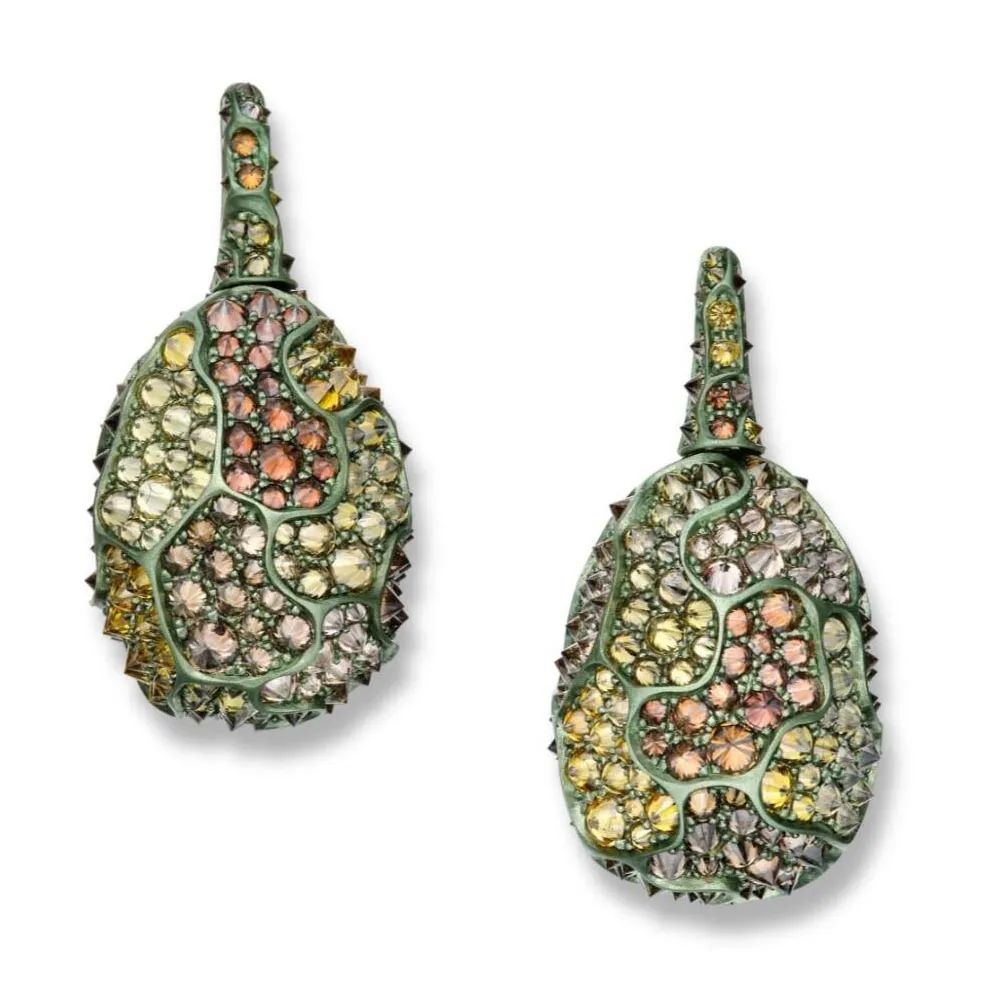
They use this characteristic to design pieces with more subtle color variations. For example, these pearl earrings use different colored inverted set diamonds to complement the subtle color variations in colorless pearls.
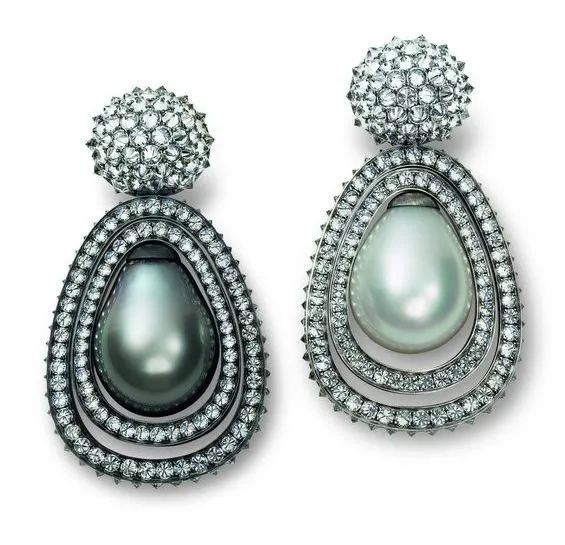
Viren Bhagat
Creating the “Sculptural Beauty” of Diamonds
You’ve likely seen the lavish wedding party of India’s richest man’s son and were impressed by the large emerald necklace worn by Nita Ambani, the wife of India’s richest man. That piece is the work of Viren Bhagat.
You may not have heard of this Indian jewelry master because he’s extremely low-key, still very resistant to social media, and rarely promotes himself. However, his work has a distinctive style and he has his own unique techniques for diamond jewelry design.
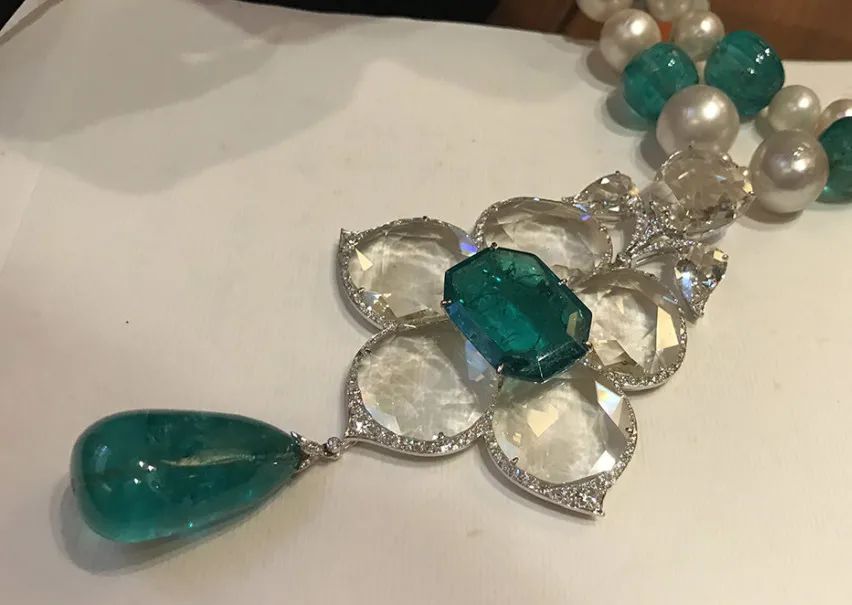
Viren Bhagat’s family has been in the jewelry industry for over a century. He started helping at his father’s jewelry store at the age of 15 and often sat in the jewelry workshop to observe and learn. Later, he directly studied jewelry design. At the encouragement of Gianni Bulgari in the late 1980s, he returned to India and founded his own jewelry brand, Bhagat, with his two brothers.
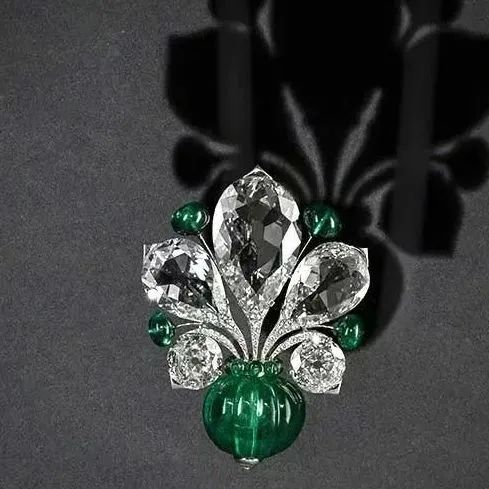
Today, Viren Bhagat’s works are collected by famous museums such as the State Museums of the Moscow Kremlin, the Metropolitan Museum of Art in New York, and the Victoria and Albert Museum in London. His pieces not only carry strong Mughal Empire influences but also showcase the refinement of Western jewelry and the abstract beauty of modern jewelry.
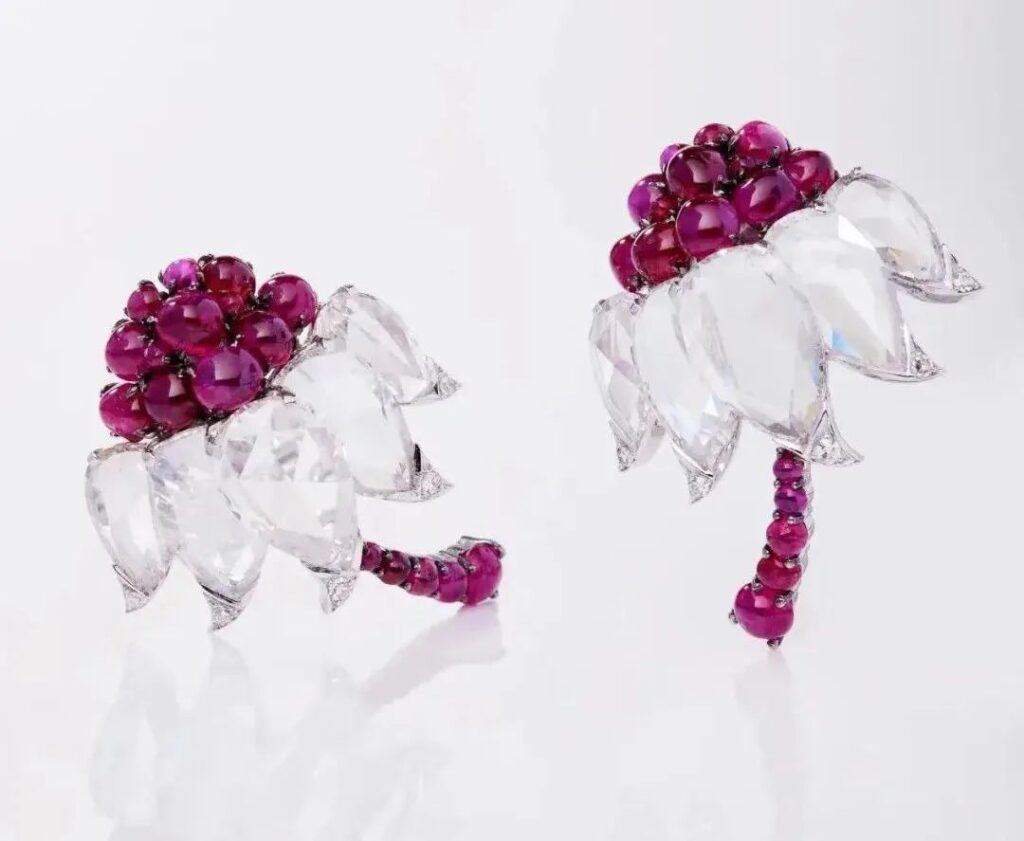
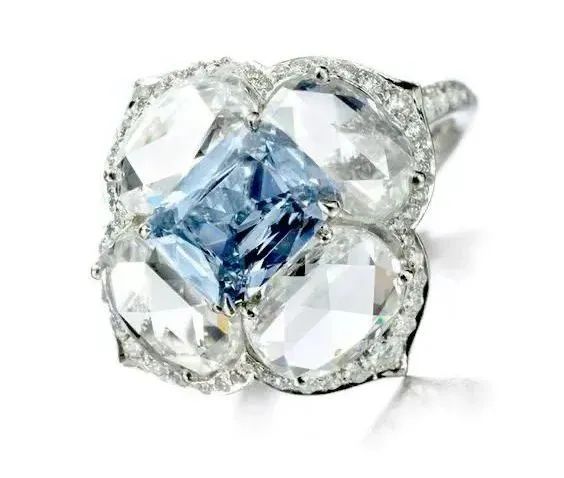
Viren Bhagat is particularly skilled at combining diamonds of different shapes and cutting styles to create a complete, three-dimensional “sculptural” work. In his pieces, you rarely see metal constructions; it feels as if a lotus flower or a leaf is carefully “carved” from a single giant diamond.
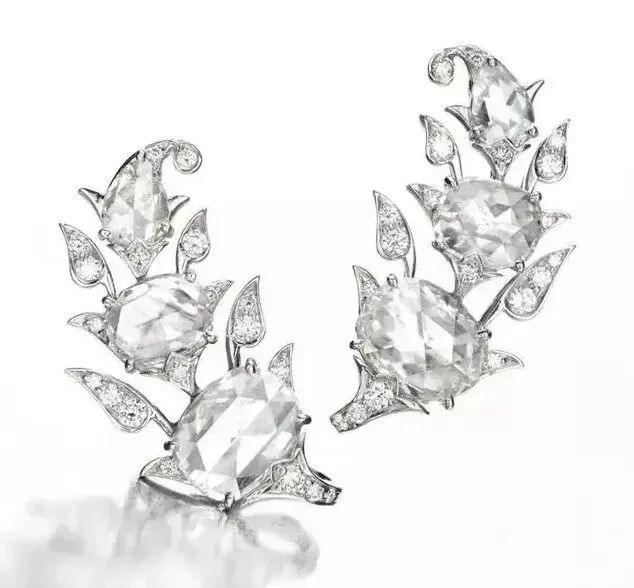
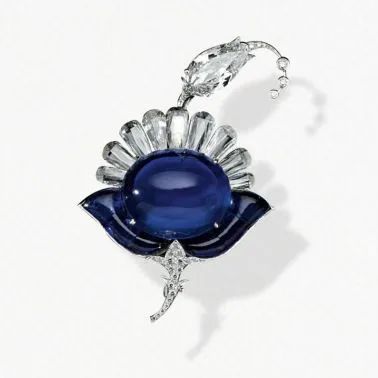
Different shapes of diamonds are meticulously combined to show smooth curves in the plane and three-dimensional blooming petals. The all-around crystalline transparency creates a sense of unified “diamond sculpture.”
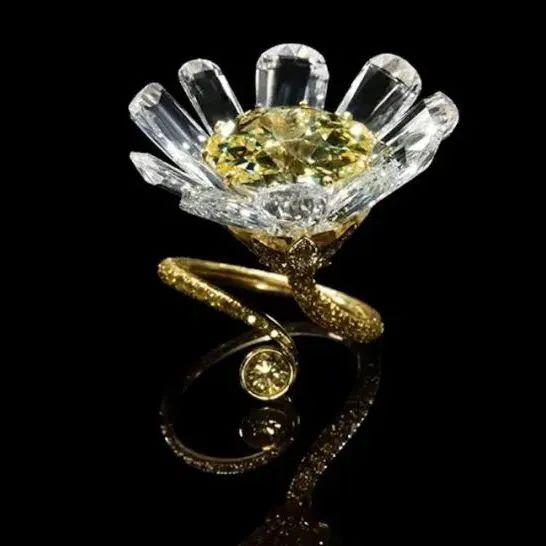
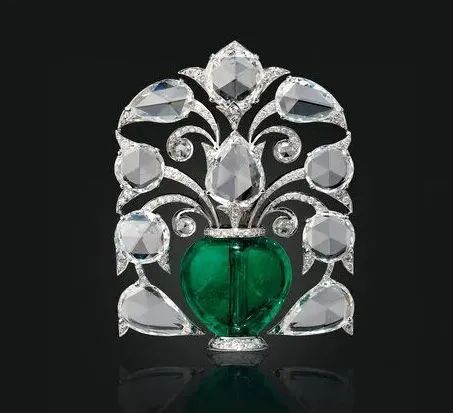
Persée
Piercing to Make Diamonds Float Ethereally
Persée founder Nawal Laoui is very skilled at combining points and lines. Her diamond necklaces give a sense of ethereal suspension, with perfectly balanced rhythm and negative space. When she discovered the diamond piercing technique, this advantage was infinitely amplified. These lively and brilliant “points” can be arranged in any way and appear anywhere.
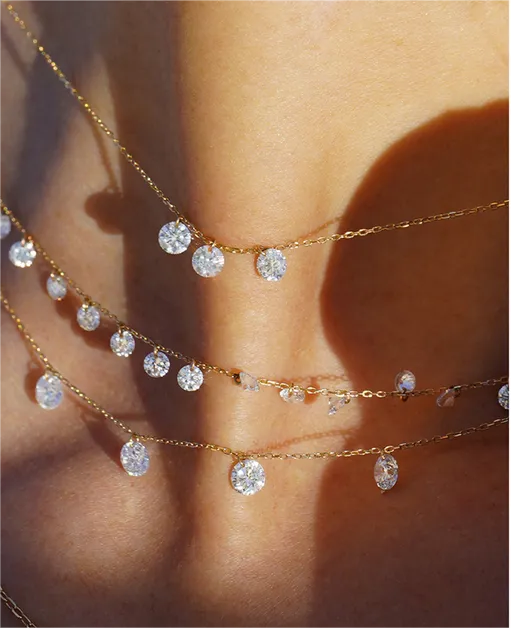
This inspiration came to Nawal Laoui when designing pearl earrings. Using piercing technology for diamond designs allows diamonds to be maximally freed from the fixity and heaviness brought by metal components. Her designed Floating ring uses extremely thin gold wire threaded through diamonds. When worn, the gold wire is invisible, making it seem as if the diamonds are directly attached to the finger.
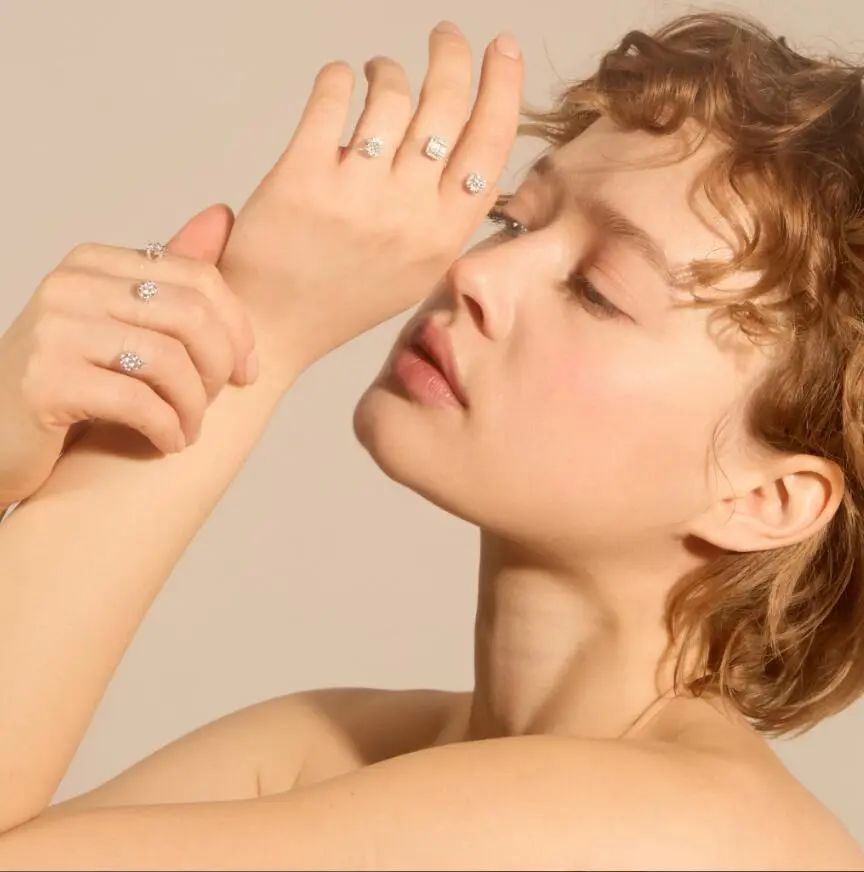
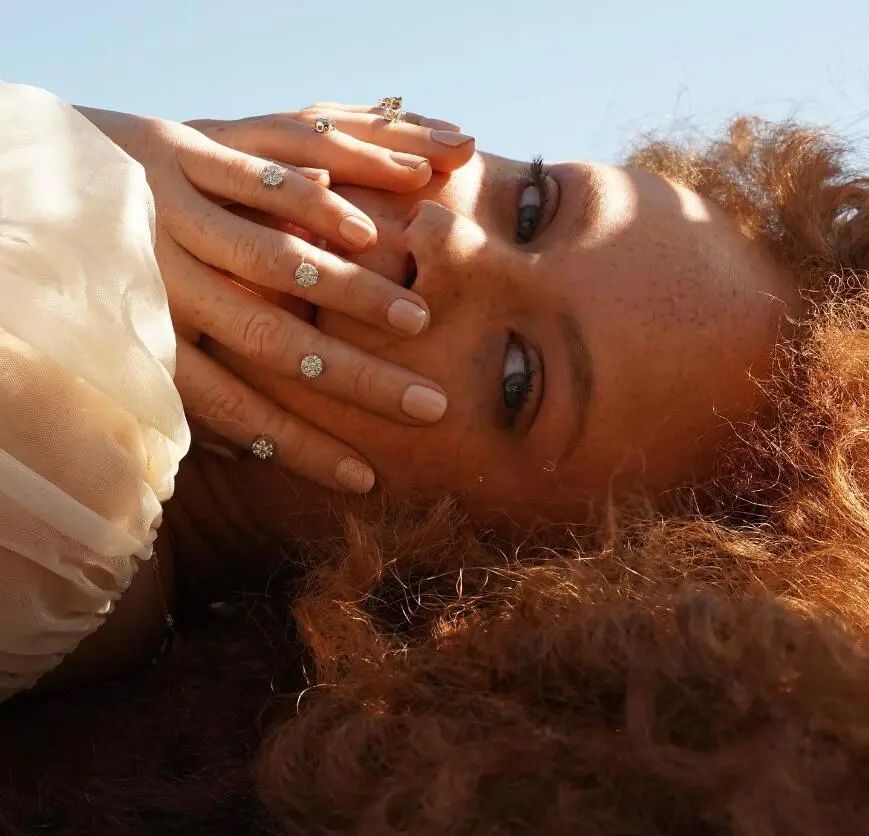
Pierced diamonds also make Persée’s designs more fluid. The combination of points and lines is lively and full of vitality, especially in tassel styles. Combining diamonds with pearls creates rich and delicate variations in long tassel earrings with different textures and radiances.
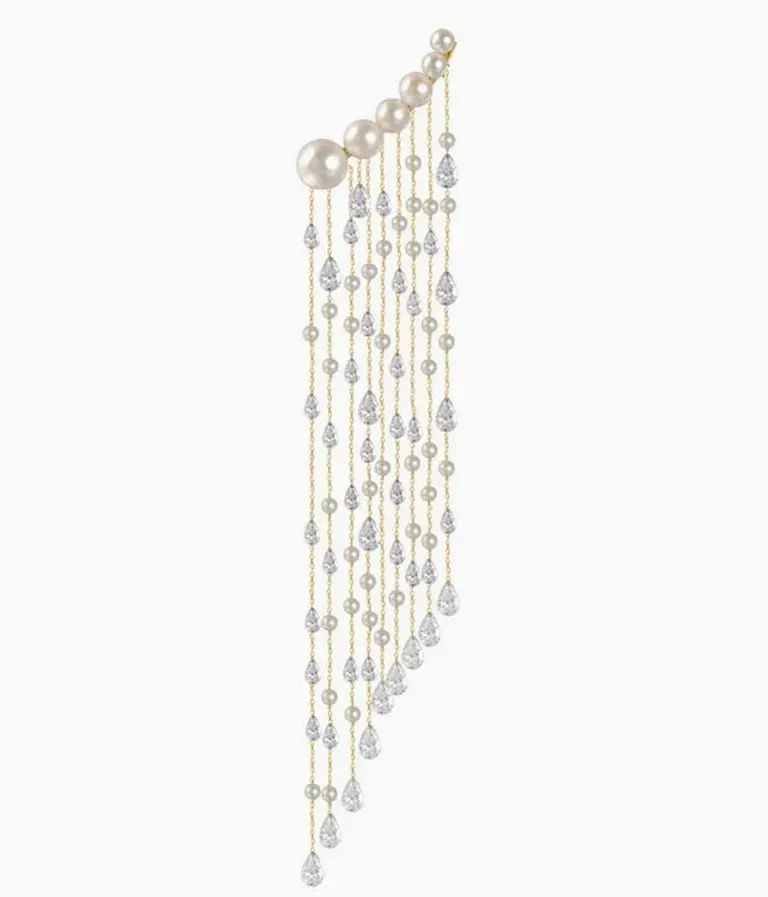
As people’s perceptions of diamond jewelry change, it’s no longer just an unattainable art piece in high jewelry or a single engagement ring. Everyday jewelry now features more variations of diamonds, and more women are accustomed to matching diamonds in their daily looks.
Now, those versatile and practical styles have become a bit boring for them. As a result, some avant-garde jewelry designers are starting to create more creative diamond designs, abandoning traditional precious metal pairings for diamonds and bringing more mind-blowing new material combinations.
Fernando Jorge
Nature’s Basic Elements Are Compatible
Jewelry designer Fernando Jorge’s works are more like contemporary art pieces. Indeed, his diamond creations are usually capsule collections in collaboration with auction houses and released during contemporary art design weeks. These “wearable art pieces,” combining natural diamonds with pebbles, large marble blocks, and carved hardstones, often make their debut in galleries and art museums.
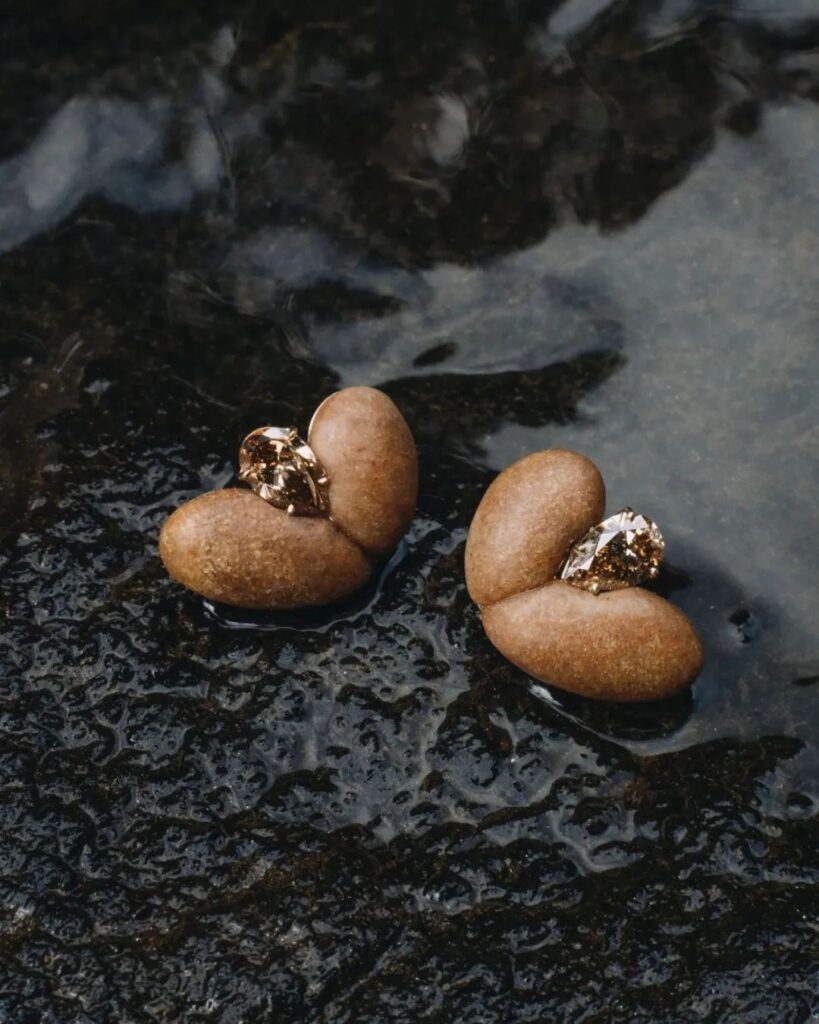
Pebbles, diamonds
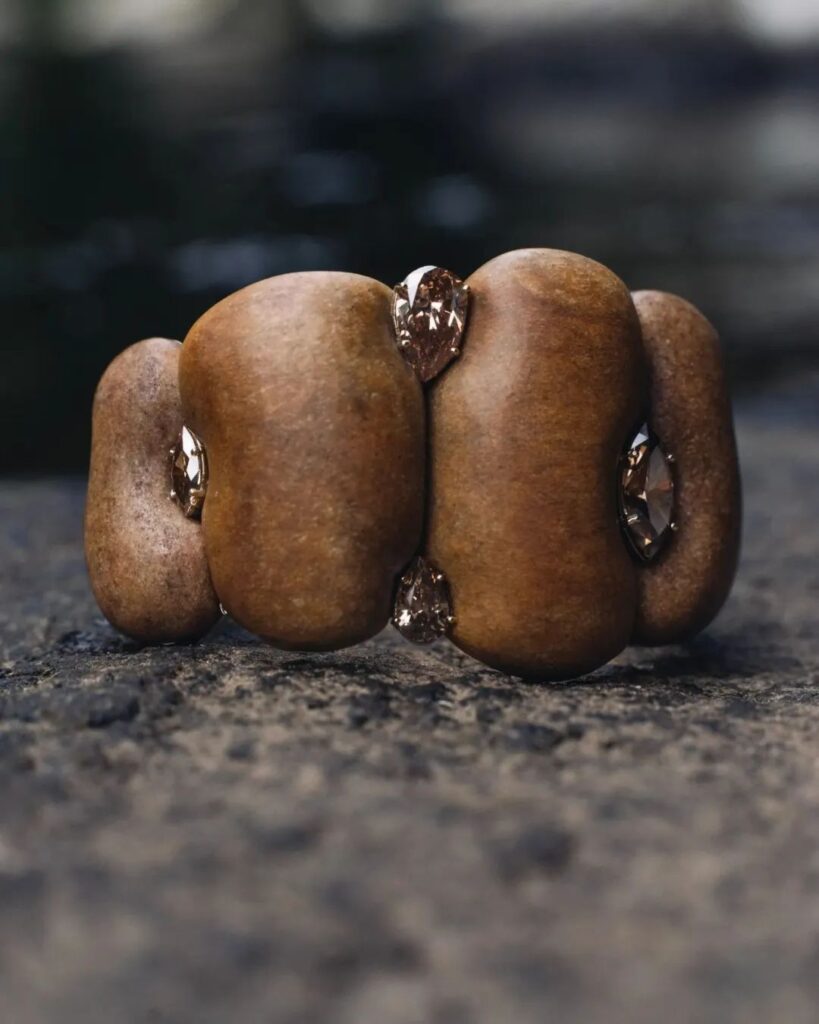
Pebbles, diamonds
For this Brazilian designer, while the brilliance and rarity of diamonds are incomparable, they remain a product of nature and, essentially, a very basic carbon element. So, isn’t it more fitting to pair them with other natural materials like pebbles, marble, and wood?
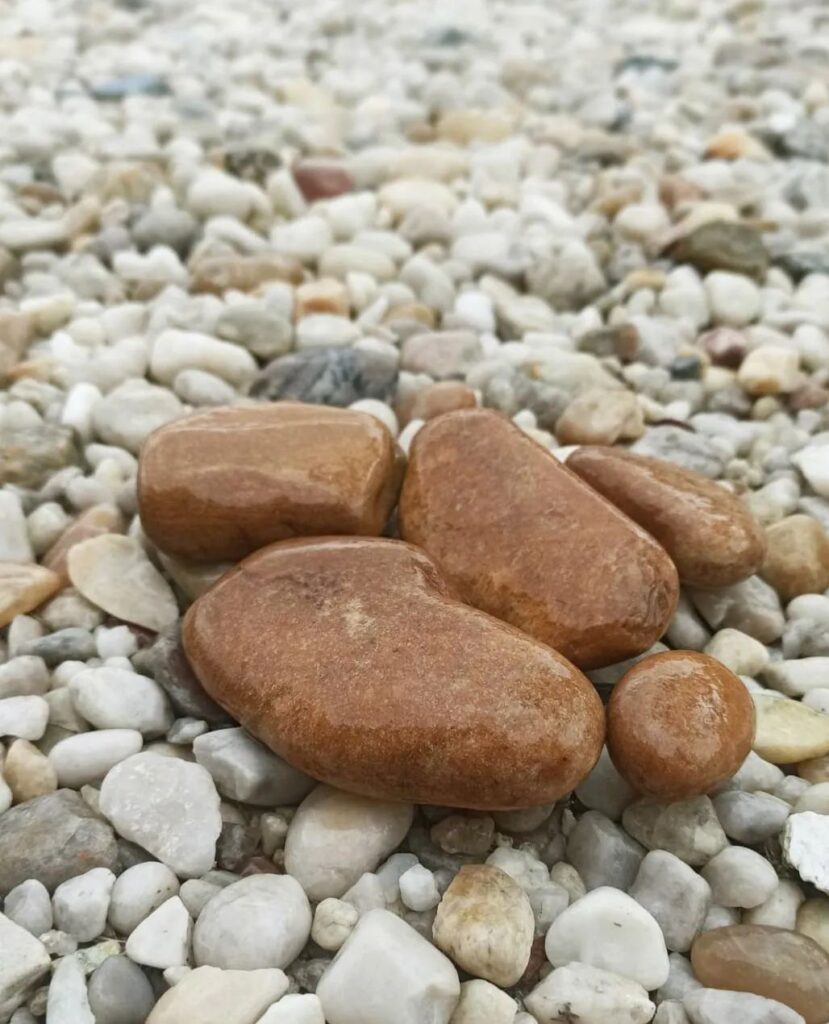
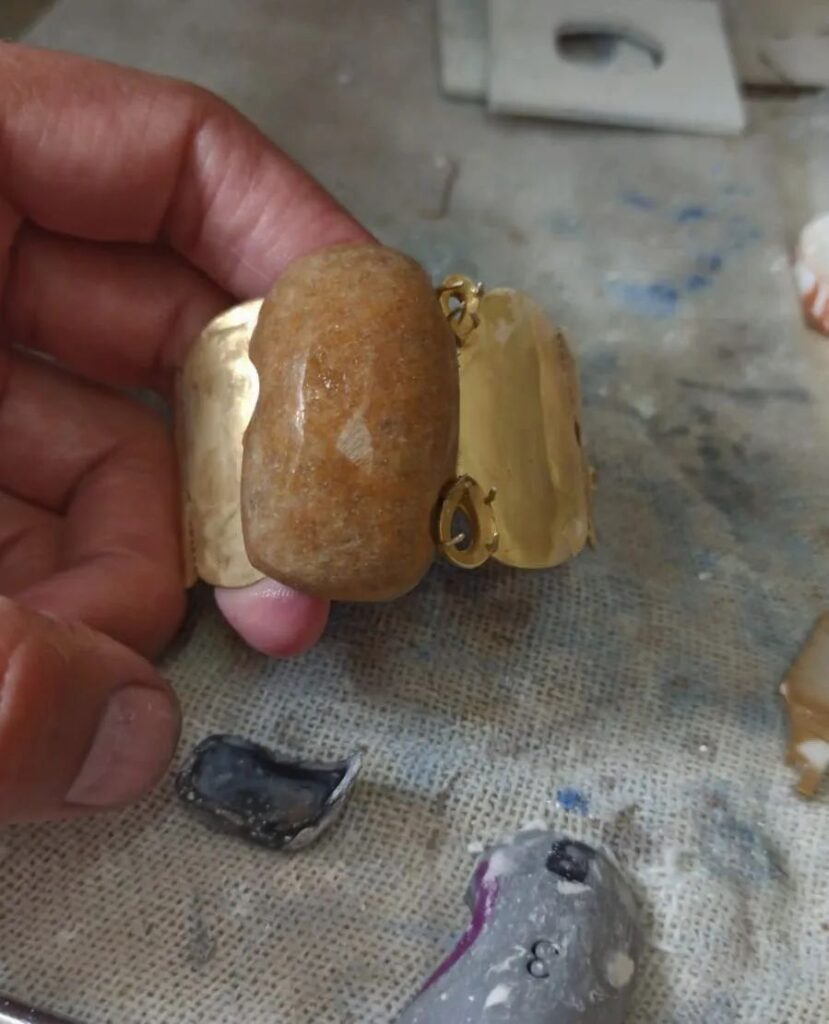
Each of his designs is unique, as no two stones in the world are identical. The overall design features natural and soft tones, textures, and curves, with abstract yet natural silhouettes. The meticulously cut diamonds emit incredibly brilliant light against the rough textures.
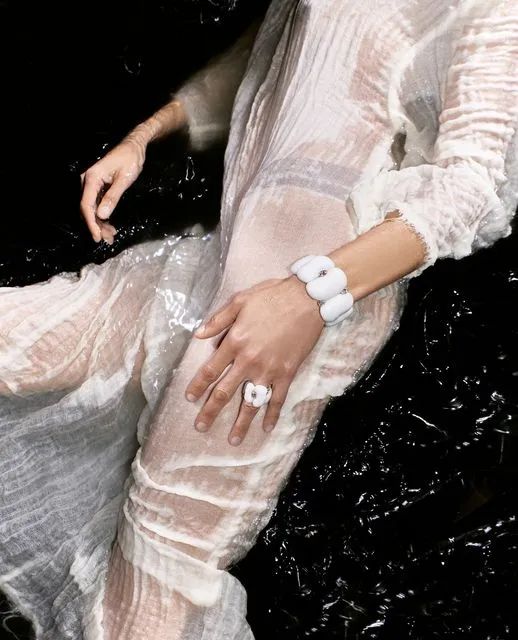
Marble, diamonds
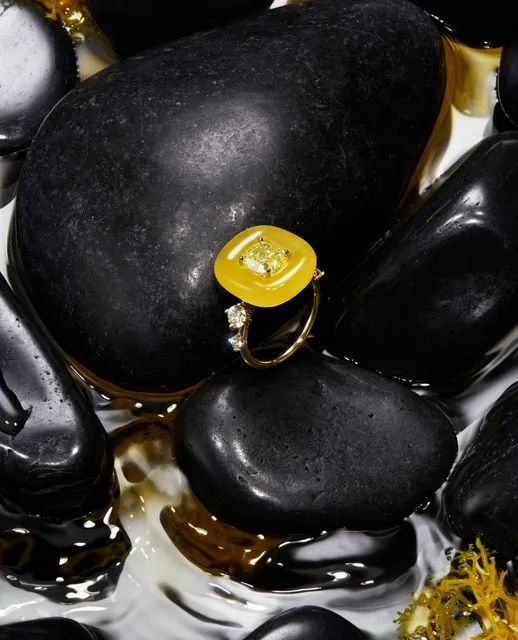
Bea Bongiasca
Colorful Enamel Makes Your Diamonds Dance
Another independent jewelry designer, Bea Bongiasca, uses colorful enamel and ceramics to give diamonds unparalleled youthful vitality. Her “You’re So Vine!” series features vibrant colors and twisted lines, making the diamonds set on them dance involuntarily.
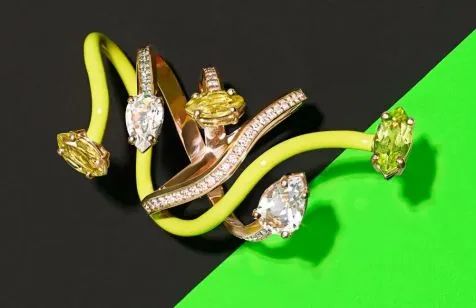
Rose gold, enamel, diamonds
The enamel and ceramic settings eliminate the seriousness of diamond jewelry. This bold combination breaks through the “traditional aesthetics” of diamonds. They are no longer the center of the jewelry; they don’t need to sit steadily in the spotlight. They can move freely up, down, left, and right, and even be partially obscured by color.
This makes her designs very compatible with modern wardrobes, as today’s young people prefer to wear diamonds in more unique and personalized ways.

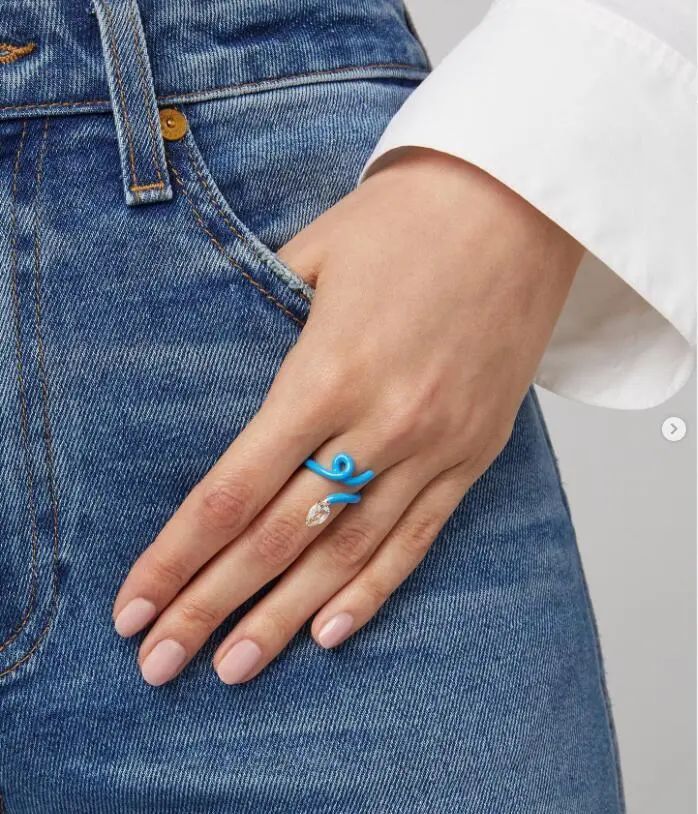
Moreover, many colored enamel rings are flexible and can be freely detached or combined, giving the wearer more DIY space. They are especially suitable for stacking, creating rich and interesting variations through the recombination of various shapes and colors.
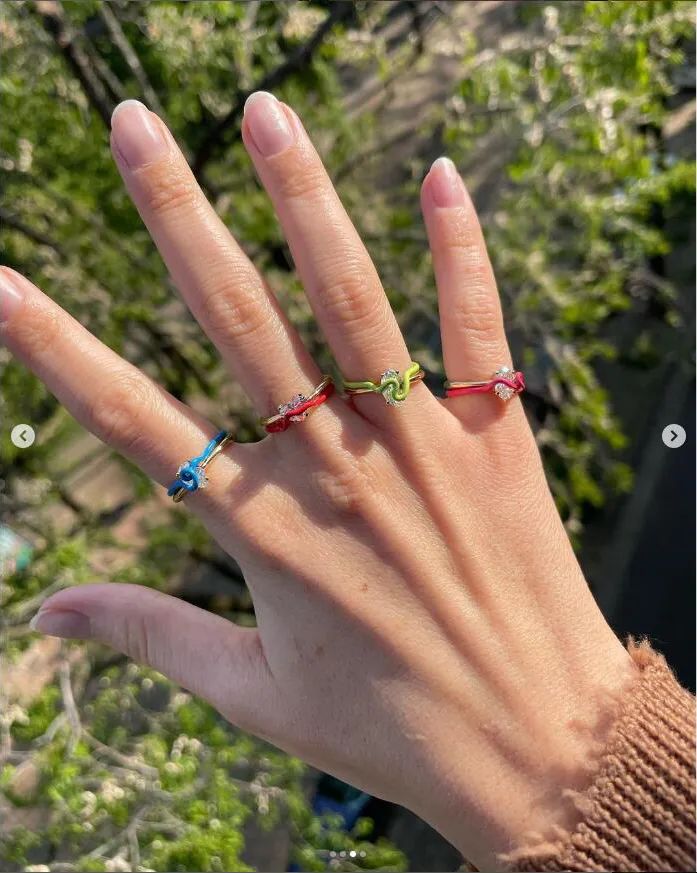
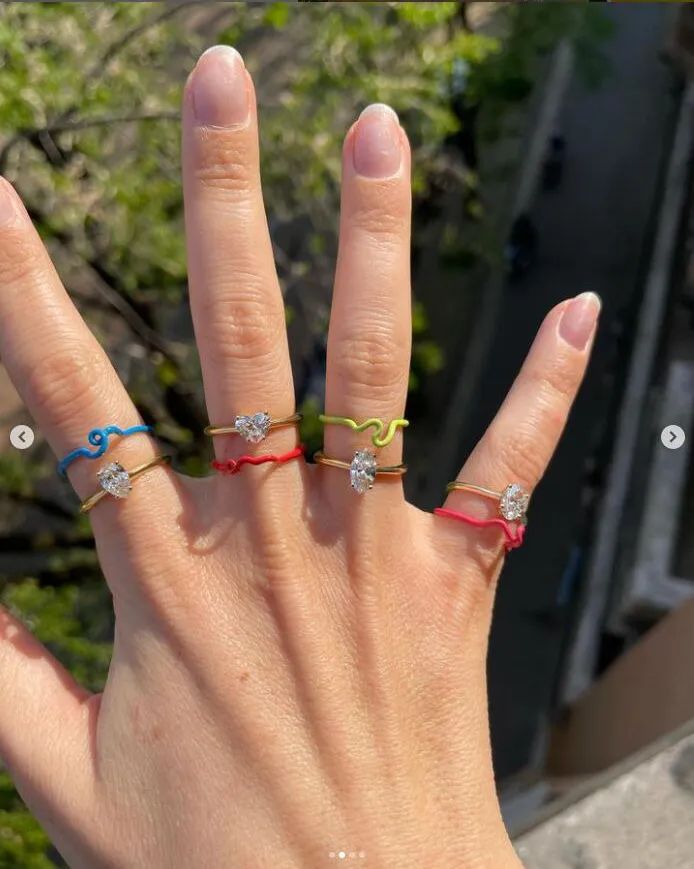
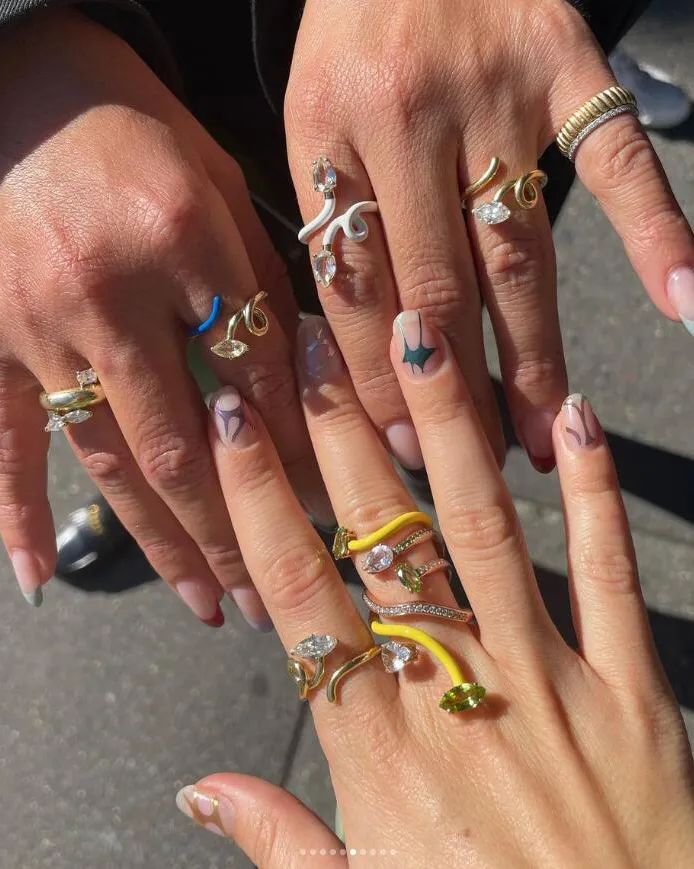
Ana Khouri
Unexpected Texture Collisions
Ana Khouri is another jewelry designer who takes an artistic approach. She has collaborations with major auction houses like Christie’s and Sotheby’s. While she prefers top-tier gemstones, she adopts an inclusive approach to other materials.
Crystal, wood, and chalcedony are her favorite pairings with diamonds, as they provide a better “background” for large, high-quality diamonds. Indeed, she treats jewelry as artistic materials, with the main stone as the highlight and other materials creating the body and foundation.
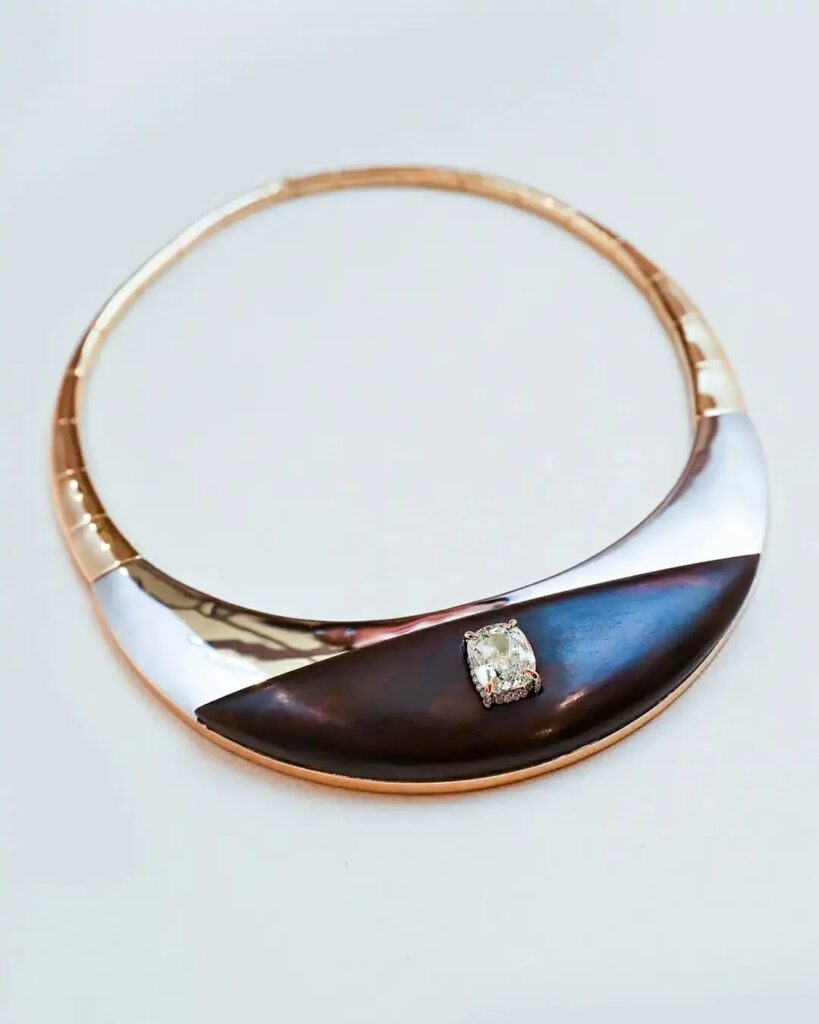
Her crystal choker necklace uses pure, transparent crystal as a “background” for brilliantly sparkling diamonds. The dazzling yellow diamond in the center is first “lifted” by a layer of concave pavé-set diamonds, then “wrapped” by the convex, highly transparent crystal. This layered progression ultimately makes the yellow diamond the most eye-catching focal point.
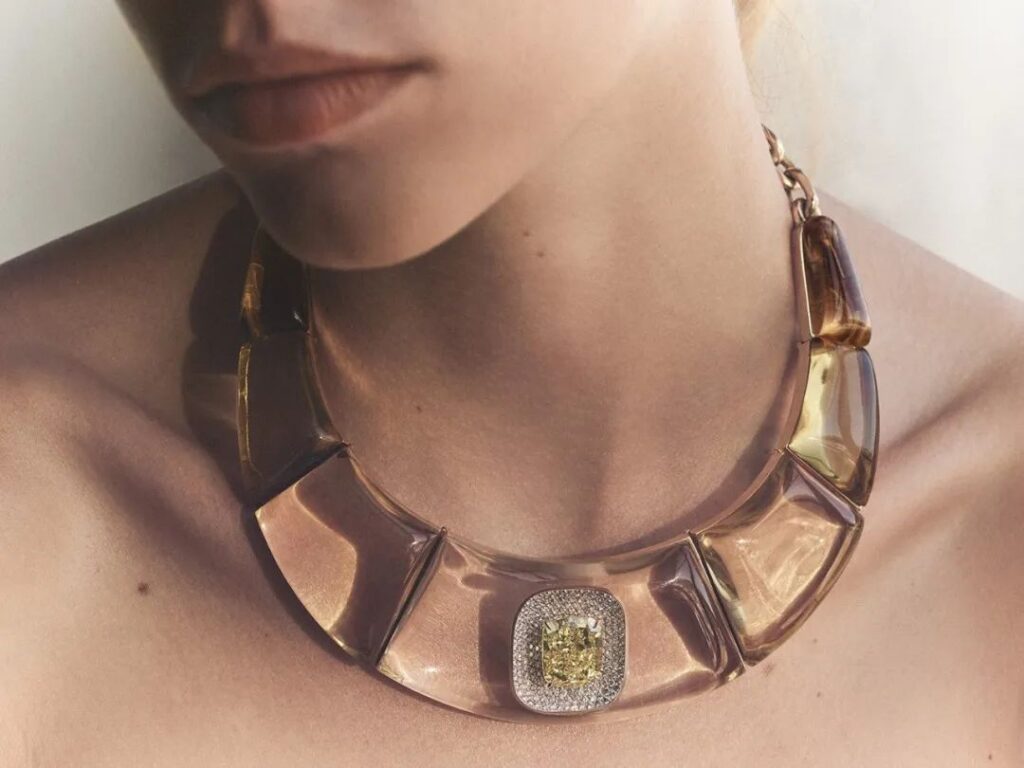
Another choker necklace made of polished wood emphasizes strong contrast. The rustic, natural wood texture collides with the brilliantly cut diamonds, creating a juxtaposition between the dark wood grain and transparent diamonds. At first glance, you notice the rich silhouette of the necklace, but what inevitably captures your attention is the pear-shaped diamond.
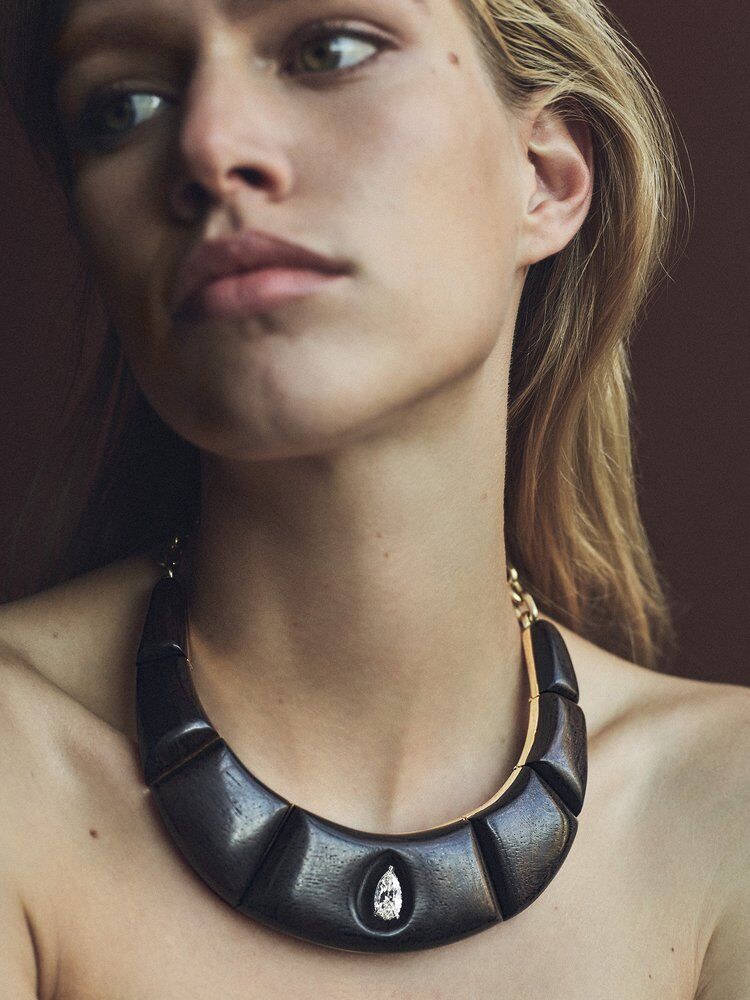
When designing smaller jewelry pieces, she pays great attention to the placement of diamonds, creating a sense of unexpected delight. Her chalcedony ring is all about surprise, with the diamond being fluid, lively, and unrestricted, forming a strong contrast with the elegant and understated chalcedony.
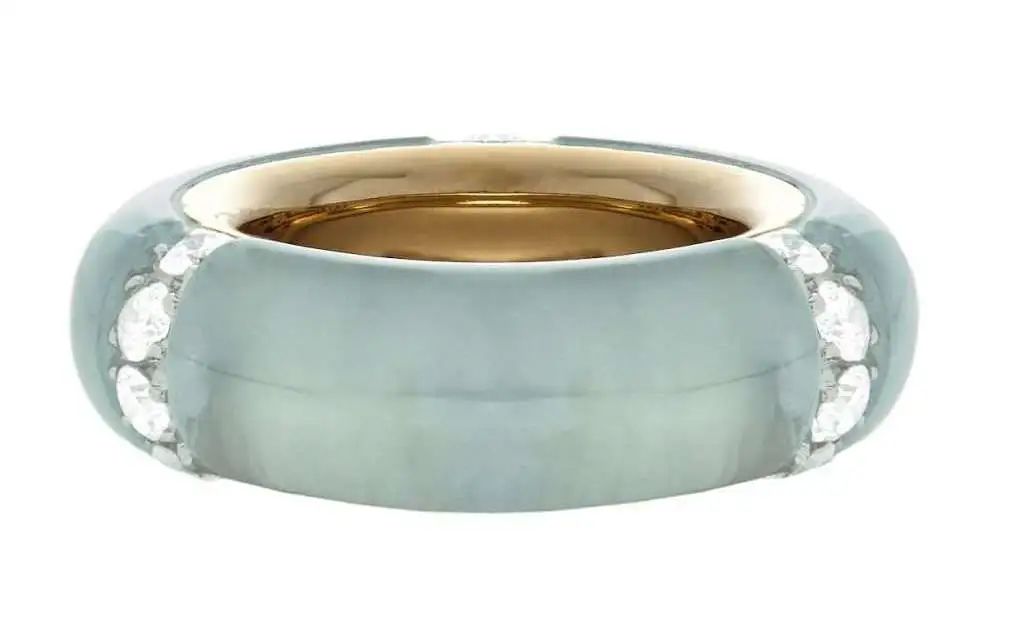

Chalcedony, diamond
So, have you discovered more choices for acquiring your April birthstone? Diamonds are indeed getting closer to our daily lives. Besides those fail-safe basic styles, perhaps it’s time to boldly try some innovative designs! Tell us in the comments what the most innovative diamond design in your jewelry box is, and give other jewelry-loving friends some new ideas!
Beyond Bling: Niche Jewelry Brands Redefine Diamond Brilliance
Tweet
